Today we in this two-page article, review the $99 USD Shanling UA4 portable USB DAC/AMP dongle.
Disclaimer: We were sent the UA4 USB DAC/AMP for this review, in exchange for our honest opinion. We thank Shanling for the opportunity.
Shanling
Founded in 1988, Shanling brings over 30 years of experience to the design and manufacture of high-fidelity audio products. Their legacy includes a reputation for superior craftsmanship, evident in a range extending from classic home audio components to innovative portable devices.
From high-end CD players to classy tube amps, the brand made a name thanks to great craftsmanship and top-of-the-line performances. You can check our previous Shanling reviews here. Today, we will look at their new addition to the UA family, the Shanling UA4.
Shanling UA4
Shanling names the series of portable DAC/AMPs they designed, the UA series. There are currently four products in the UA line-up. The UA1, UA2, UA3, and the flagship UA5. The UA1 and UA2 are simpler, more straightforward products compared to the UA3 and UA5.
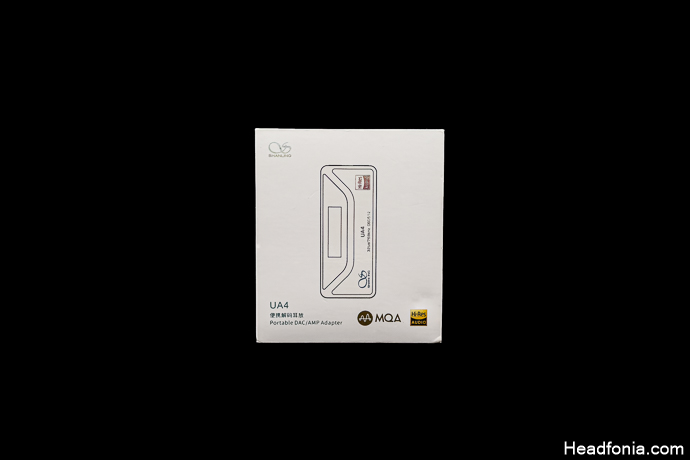
Shanling UA3 and the UA4 are slightly more advanced than the 1 and 2, with the addition of customizable multifunctional buttons on the chassis. Today, we are focusing on the latest addition, the UA4. The UA4 is the latest addition to the UA line-up and comes equipped with the ESS’ ES9069Q. Similar to the UA3, it also uses two Ricore RT6836 amplifiers and delivers 223 mW of power through the 4.4mm BAL output to a 32-ohm load. The UA4 retails for 99 USD on Shanling’s official Aliexpress store and is also available on well-known retailers such as Linsoul.com and HiFiGO.com. Here are the full specs and highlights of the UA4:
- ESS ES9069Q DAC + Dual Ricore RT6863 AMPs
- Tantalum Capacitors (6x Kemet) + Low Noise LDO Regulator
- Advanced Low-Dropout Voltage Regulator
- 3.5mm: 137mW@32Ω | 4.4mm: 227mW@32Ω
- UAC 1.0 / 2.0 Modes + Eddict Player App Support
- 32-bit 768kHz & DSD512 + MQA Support
- 0.87-inch Monochrome Display with Menu & Nav. Buttons
- Machined Aluminum Chassis with Anodized Finish
- Available in Silver and Titanium
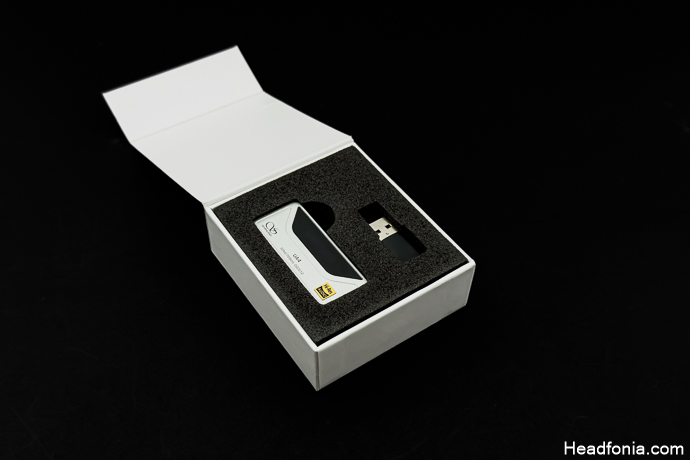
Packaging & Accessories
The UA4 arrives in a compact white cardboard box, showcasing a shift towards minimalist design compared to the more elaborate packaging of the UA5. A simple outline of the UA4 graces the front, lending a touch of elegance, while essential information (specs, serial numbers, and company addresses) is found on the back of the flip-top box.
Inside, you’ll find the UA4 alongside a few thoughtfully chosen accessories. These include a durable-looking, brown braided USB-C to USB-C cable with a supple cable jacket, a USB-C to USB-A converter for wider compatibility, a quick setup guide, and a couple of stickers.
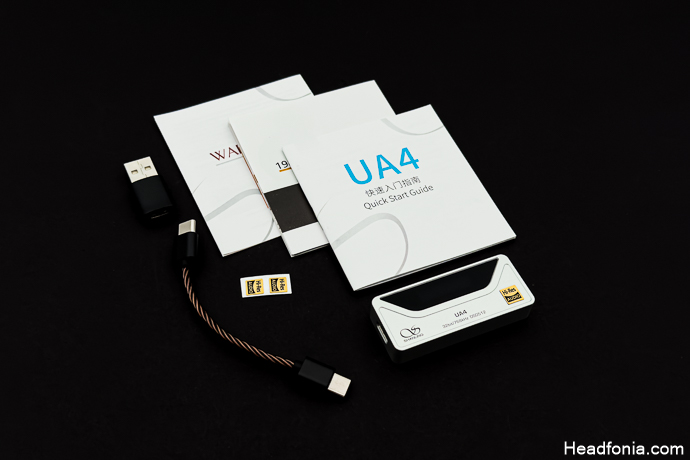
Design & Build Quality
Shanling’s devices often share a particular design language, but the UA4 breaks the trend with its rectangular shape, angular form, and sharper corners. Available in titanium or silver, both colors feature an anodized finish on the aluminum chassis. I find the UA4 to be the most visually appealing of the entire UA range due to its compact size, sharper design, and the seamless positioning of the OLED screen. The screen isn’t just for show; Shanling’s well-designed menu is effortlessly navigated using the integrated buttons and offers a wide range of information for a small screen. It’s surprisingly easy to learn the controls, and you can quickly see the active volume level, gain setting, filter setting, and current sample rate all at a glance. This eliminates the frustration of the usual small screen that only displays one piece of information at a time. It is a design choice that deserves praise in my book. The screen blends perfectly with the black frame, creating a sleek, unified look that further enhances UA4’s aesthetic appeal. Simply put, the UA4 is one of the most attractive USB DAC/AMPs on the market today in my opinion.
The unit feels remarkably sturdy for its size, with a solid USB connector, tactile buttons, and rigid headphone sockets. Gold accents around the 3.5mm and 4.4mm headphone outputs add a touch of flair while not being too flashy. It resembles Sony’s old Walkman line in this regard, which I find well-designed. The UA4 is incredibly light and compact at around 20-25 grams, making it an ideal portable companion for IEMs.
Overall, the UA4’s design and build quality are impressive. I couldn’t find any CNC milling or assembly errors. Shanling also offers a separately available leather pouch in orange and green. While these colors are vibrant, a neutral option such as grey or black would broaden its appeal to the consumer base. You can find the leather case here.
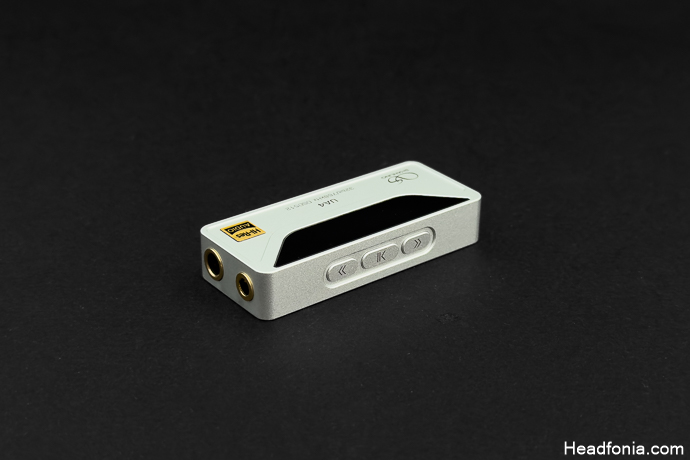
Features & Technology
Let’s take a closer look at the tech Shanling used in the UA4. Shanling utilizes ESS Technology’s new DAC chip, ES9069Q, which is a relatively new audiophile/premium-tier DAC chip. The ES9069Q has an integrated licensed and standard-compliant MQA native hardware renderer. We saw the same chipset with FiiO’s KA17. The ES9069Q appears to be the mobilized/efficient version of the well-known chip ES9068, which was one of the flagbearers of the company along with ES9038 for a long time. The 9069Q has improved Hyperstream IV modulators and also features programmable FIR filters. The UA4 comes with nine DAC filters that are available through the menu.
On the amp floor, Shanling continues with the Ricore RT6863 op-amps, which they used on the flagship UA5 as well. The UA4 is capable of delivering 137mW@32Ω through the 3.5mm HPO and 227mW@32Ω through the 4.4mm. Power-wise, these numbers are plenty for the IEMs
Shanling mentions the presence of six Kemet brand tantalum capacitors and LDOs on the audio PCB, and compared to the UA3, the UA4 comes with full hardware control. The multifunctional buttons control the hardware volume, or you can configure them to control the playback or even both! As with the rest of the UA line, the UA4 is compatible with Eddict Player application; however, controls and settings here can also be configured with an Android phone due to iOS’ internal limitations. On another note, for those who still listen to MQA tracks, the UA4 offers 16x rendering, and the display shows the MQA logo whenever it is fully utilized.
The UA4 comes with USB 1.0 support, and Shanling uses an efficient approach. If you want to plug it into your Nintendo Switch, you have to hold down the middle button while plugging it into a USB 1.0 device, and UAC1 will automatically be utilized. It is a much better solution than relying on external apps! Also, there’s an option to change the font and use a screensaver, which is floating musical notes!
My experience with the UA4 was quite positive; I haven’t run into any bugs, even while upgrading the FW. I am on V1.0.3, which is the latest FW as of March 2024. You can check the latest firmware through this link.
Shanling states that their new power optimization implementation results in UA4 drawing 65% less power on standby and 40% less power during playback, which is impressive if true. In my experience, I did not notice any excessive drain with either of my phones, Android or iOS, through the USB-C port directly (without OTG).
The review continues on Page Two, after the click here or by using the jump below.
Page 1: Shanling, UA4, Packaging & Accessories, Design & Build Quality, Features & Technology
Page 2: Sound, Low, Mid, High, Technical Performance, Comparison, Last Words







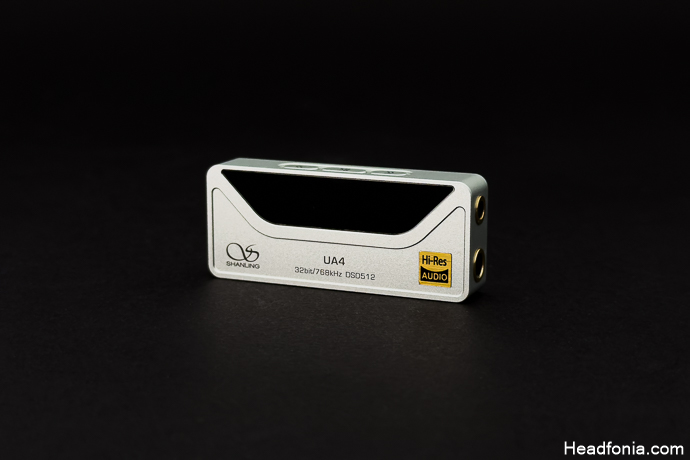
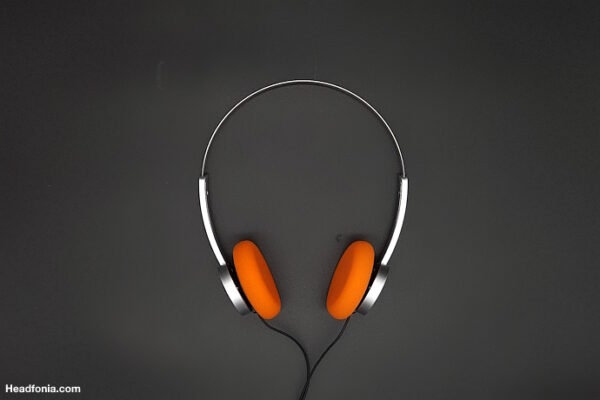
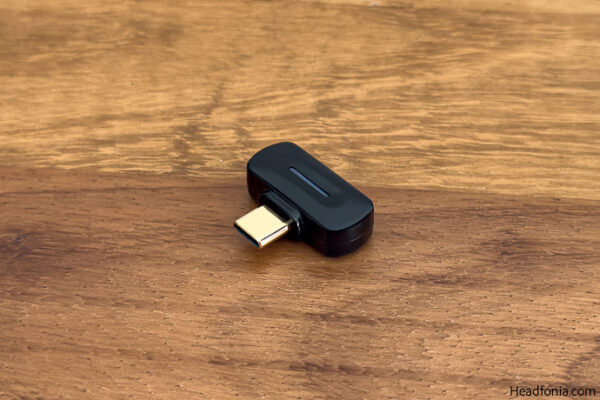
M.Aksoy
DC04pro or this?
Yagiz
Neither. I’d go for the DC06Pro, DC07Pro or Onix Alpha.
M.Aksoy
I ordered the Onix Alpha. Thanks!:)
Max
How do they compare to UA5?